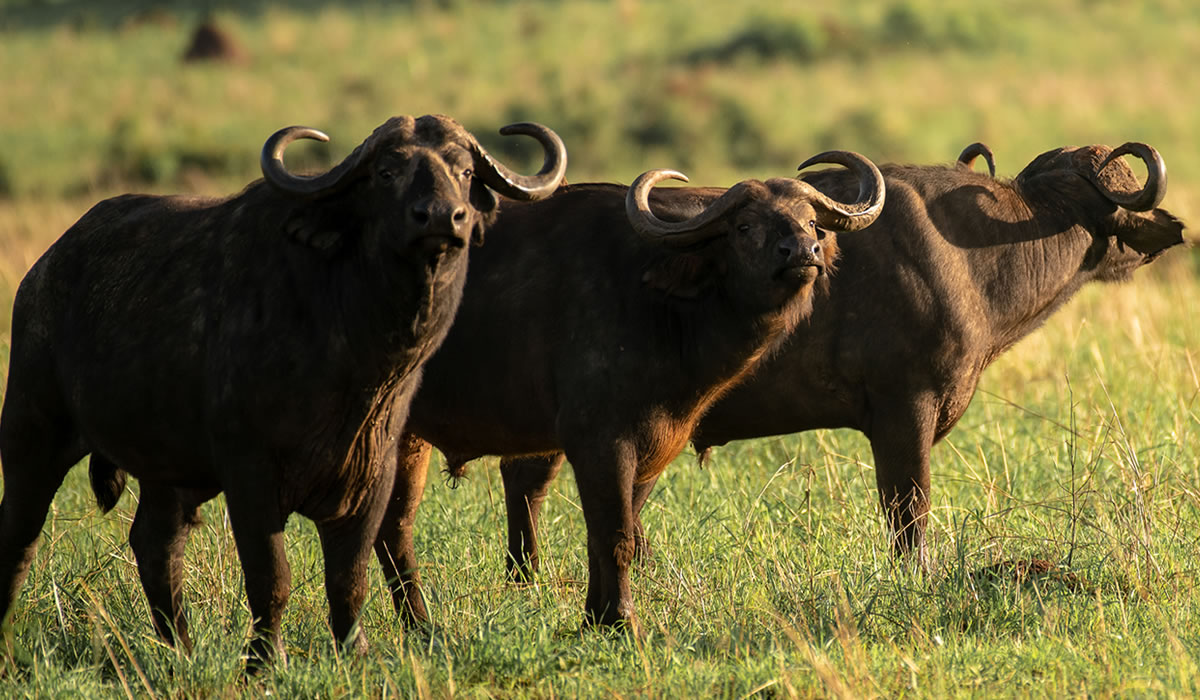Kidepo Valley National Park is often described as Uganda’s hidden gem, a remote and untouched wilderness that offers some of the most spectacular safari experiences in Africa. Located in the northeastern corner of Uganda, along the borders with South Sudan and Kenya, Kidepo covers an area of 1,442 square kilometers. Its dramatic landscapes, sweeping savannahs, rugged mountains, and diverse wildlife make it one of the most enchanting yet least explored national parks in East Africa. Unlike Uganda’s more popular destinations such as Bwindi Impenetrable National Park or Queen Elizabeth National Park, Kidepo remains off the beaten path, offering visitors an authentic and uncrowded safari experience.

The park was established in 1962 and has since gained recognition as one of Africa’s most beautiful wilderness areas. National Geographic once ranked Kidepo among the top national parks in Africa because of its striking scenery and exceptional wildlife diversity. Despite its remoteness, the park attracts travelers who want to experience a safari in its purest form, where wildlife roams freely across open plains and cultural encounters with the Karamojong people add a unique human element to the journey.
The Landscapes of Kidepo
Kidepo Valley National Park is set against a backdrop of rugged mountains and open grasslands. Its scenery is dominated by two main valleys, the Narus Valley and the Kidepo Valley, each offering unique attractions and wildlife sightings. The Narus Valley is the most popular part of the park, characterized by rolling grasslands, seasonal water pools, and swamps that attract large concentrations of animals throughout the year. This valley is the best place to spot wildlife, especially during the dry season when water becomes scarce in other parts of the park.
The Kidepo Valley, on the other hand, is more arid and semi-desert-like, with the seasonal Kidepo River running through it. During the dry months, the riverbed dries up completely, leaving a vast sandy plain where ostriches, secretary birds, and other dry-country species can be seen. The landscapes here are breathtaking, stretching as far as the eye can see, with Mount Morungole and other ranges providing dramatic views. It is this combination of savannah, mountains, and semi-desert that makes Kidepo so visually striking and different from any other park in Uganda.
Wildlife in Kidepo
Kidepo Valley National Park is home to some of the most diverse wildlife in Uganda, with over 75 mammal species and 470 bird species. The park is especially known for harboring species that cannot be found elsewhere in Uganda, making it a unique safari destination. Lions, elephants, giraffes, zebras, buffaloes, and leopards are among the most common sightings in the Narus Valley. Large herds of buffalo, sometimes numbering in the thousands, are a spectacular sight and a reminder of Africa’s untamed wilderness.
One of Kidepo’s highlights is the presence of cheetahs, which are not found in other Ugandan parks. Ostriches, kudu, eland, caracal, aardwolf, and bat-eared foxes are also unique species that thrive here. The abundance of predators such as lions, leopards, hyenas, and jackals makes Kidepo a prime destination for predator sightings. Bird lovers are equally rewarded, with species such as the Abyssinian roller, Karamoja apalis, kori bustard, and the giant ostrich creating unforgettable birding experiences.
Because of its low tourist numbers compared to other parks, wildlife in Kidepo is less accustomed to vehicles, which makes game drives feel more adventurous and authentic. The remote setting also means there are no crowds, so sightings are intimate and undisturbed.
Cultural Experiences
Visiting Kidepo Valley National Park is not only about wildlife, it is also about connecting with the cultural heritage of the people who live around the park. The Karamojong, a pastoralist community related to the Maasai of Kenya, inhabit the region surrounding the park. Their traditional lifestyle, cattle-centered culture, and distinctive attire make them one of the most fascinating tribes to interact with in Uganda.
Cultural tours to Karamojong manyattas (homesteads) allow visitors to experience their way of life, from cattle rearing and traditional dances to storytelling and crafts. These interactions provide insight into a community that has retained much of its cultural identity despite modernization. The Ik people, one of the smallest and most isolated tribes in Uganda, also live on the slopes of Mount Morungole near the park. Visiting them requires a guided hike but offers an incredible cultural encounter with a community that lives largely in seclusion.
These cultural experiences, combined with the wildlife and landscapes, make Kidepo Valley National Park a place where nature and human heritage blend seamlessly.
Safari Activities
Game drives are the main activity in Kidepo, with routes covering both the Narus and Kidepo Valleys. Early morning and evening drives offer the best opportunities to see predators in action as they hunt or patrol their territories. Because the park is vast and less visited, game drives feel like private adventures across unspoiled landscapes.
Guided nature walks and hiking are also popular in Kidepo. The park’s varied terrain provides trails that range from easy walks to challenging hikes up Mount Morungole. Walking safaris with rangers give visitors a chance to experience the wilderness at a slower pace, spotting smaller creatures, bird species, and learning about the plants and ecology of the area.
Birdwatching is another rewarding activity, especially in the Kidepo and Narus Valleys where savannah and semi-arid species thrive. The dry country birds, combined with Uganda’s more common savannah birds, make Kidepo one of the top birding destinations in East Africa.
Cultural visits to nearby Karamojong and Ik communities add depth to the safari, providing a human connection to the landscapes that surround the park.
Accommodation in Kidepo
Although Kidepo is remote, it offers a range of accommodation options that cater to different budgets. For luxury travelers, Apoka Safari Lodge is the premier choice, offering elegant cottages with views over the Narus Valley and top-notch service. Midrange options such as Kidepo Savannah Lodge provide comfort with a rustic safari feel, while budget travelers can choose from bandas and campsites managed by Uganda Wildlife Authority.
Camping under the African skies in Kidepo is an unforgettable experience, with the sounds of lions roaring in the distance or hyenas calling at night. The remoteness of the park ensures a true wilderness atmosphere, no matter the level of accommodation chosen.
Accessibility and Best Time to Visit
Reaching Kidepo Valley National Park requires determination, but the journey is part of the adventure. By road, it takes about 10 to 12 hours from Kampala, passing through scenic landscapes, villages, and the rugged Karamoja region. While the road trip is long, it offers insight into rural Uganda and the beauty of less-traveled regions. For those short on time, domestic flights operated by AeroLink connect Entebbe or Kampala to Kidepo’s airstrip in just two hours.
The best time to visit Kidepo is during the dry seasons from September to March, when wildlife gathers around water sources and the park is more accessible. The wet seasons of April to August bring lush scenery and fewer tourists, but some roads can become difficult to navigate. Regardless of the season, Kidepo’s beauty and remoteness guarantee a rewarding safari experience.
Conservation Efforts
Like many protected areas, Kidepo Valley National Park faces challenges such as poaching, human-wildlife conflict, and limited accessibility. However, conservation efforts led by the Uganda Wildlife Authority, international partners, and local communities have ensured the park remains one of the most intact wilderness areas in Uganda. Community engagement and revenue-sharing programs have helped reduce poaching by giving locals a stake in tourism benefits.
The park’s remoteness has also played a role in preserving its unique ecosystem, keeping it free from the mass tourism pressures seen in other destinations. With continued investment in conservation and tourism infrastructure, Kidepo is set to become one of the top safari destinations in East Africa.
Why Visit Kidepo Valley National Park
Kidepo Valley National Park is a destination that offers more than just a safari. It is a journey into one of Africa’s last untouched wilderness areas, where landscapes are vast, wildlife is diverse, and cultural encounters are enriching. From watching lions lounging on rocky outcrops to seeing ostriches sprint across sandy plains, every moment in Kidepo feels like a discovery.
For travelers seeking authenticity, remoteness, and adventure, Kidepo is unmatched. It may be harder to reach than other parks, but the reward is an uncrowded, raw, and unforgettable safari experience. As Uganda’s hidden treasure, Kidepo Valley National Park invites visitors to explore its secrets, connect with its people, and immerse themselves in the wild beauty of Africa.
